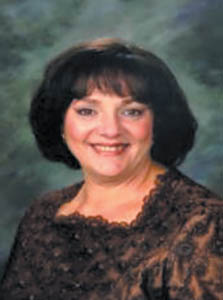
Part III
My interest in the topic of forgiveness was inspired by my dear friend Sarah Light a”h. Sarah was an exemplary role model in this character trait, and so for her first yahrzeit, I decided to dedicate a Rosh Chodesh shiur for women, in her honor, based on my Torah study of this challenging area in human relationships. Indeed, I know from my own experience, that as difficult as it to admit one’s wrongdoing toward another, it is even harder to forgive. And yet, Sarah was able to accomplish this to the full measure required both from halachic and humane perspectives. Whenever I watched Sarah in action, I always wondered how something so seemingly difficult and elusive to others, causing lifelong rifts among family members and friends, seemed so forthright and simple for her. In the Bereishit stories we learn that the ability to forgive was passed on to us by our Avot and Imahot; yet, what distinguished Sarah from the rest was that instead of allowing this trait to remain dormant, she worked hard at accessing it to its fullest measure, even though some of her life experiences justified holding on to her grievances. Sarah seemed to intuitively understand that this would only lead to unresolved conflicts and pervasive feelings of anger. For Sarah, her genuine love of mankind did not allow her the option of focusing on being right; rather, she extended her greatest efforts on taking the difficult, but necessary steps in opening the door to forgiveness. Last month, we commemorated Sarah’s seventh yahrzeit. Because she inspired my further study of this area in human relationships, both spiritually and professionally, I would like to dedicate this article to the memory of my dear friend.
In the first two articles of this series, we considered the prominent position the value of “forgiveness” plays in our in Jewish ideology. We also explored the various Torah sources which detail the origins of forgiveness, and learned that it was the dramatic encounters between Yaakov and Eisav, and Yosef and his siblings, that contain all the essential elements of “forgiveness,” identified in current psychological theory and practice, as well as the strategies that can bring this daunting mission to its completion. Last month, we explored the first step in this journey, through the lesson Rivkah communicated to Yaakov when he escaped the wrath of Eisav and fled to Charan. In analyzing the wording in the pesukim, we learned that in almost every conflict, each party appears to be “right” from his perspective; yet the important lesson Rivkah taught Yaakov is that conflicts are most successfully resolved through “contribution,” rather than “shame” and “blame.” Indeed, it is the act of asking oneself what part he or she may have played in the rift, that provides the necessary opening for the possibility of forgiveness to be born. Moreover, when Yaakov made the decision to take the high road and initiate this fateful step, his ability to let go of his own anger proved to be the litmus test for ensuring that Eisav would be receptive as well.
As the story progresses, we see that once Yaakov took this first step, he began to prepare for his face-to-face encounter with Eisav; he did so by sending out feelers via the messengers in order to gain a sense of Eisav’s own feelings towards him. When the angels returned, informing him that his brother was approaching with a large army, he understood that Eisav’s emotions were still raw. Perhaps it was at this point that he tapped into the advice of his mother and began focusing on ridding himself of all the anger he still experienced. If we jump ahead to the dramatic encounter when the two brothers actually meet in the flesh (33: 3-4), to our surprise we come upon the magical moment of reconciliation. Yaakov runs ahead and bows earthward seven times until he reaches Eisav, and upon seeing this, Eisav runs towards Yaakov and embraces him and falls upon his neck; but it doesn’t stop there, and the brothers kiss one another and cry. Rashi, among other commentaries, weigh in on the debate regarding the authenticity of these kisses and tears. Some argue that the tears and kisses were in fact genuine, reflecting the love the brothers felt for one another at this point in time. The Tanya explains that for all these years, Eisav hated Yaakov, but his mercy was somehow warmed during this encounter.
This explanation begs the question of how it came to be that all the prior feelings of anger and hatred just melted away. Yet, if we consider the very early intimations of “acknowledgement,” “validation,” “empathy” and “remorse” displayed by Yaakov, we can understand that the key to this transformation was Yaakov’s genuine remorse, and his ability to feel the pain he inflicted upon Eisav; and as we see, for Yaakov this was extremely difficult. Even at the very end of this journey, as he approached his brother, he fell and righted himself seven times, until the burden of resentment finally fell away, and it was the kisses and tears that demonstrated that love replaced the hatred Yaakov carried with him all those lonely years. Most importantly, it was because of these essential elements the prospect of forgiveness became a reality for the two brothers. May we learn from role models such as Yaakov and Sarah of the importance of “forgiving even when we can’t forget.”
Sara Toba Bat Shabsai a”h
By Renee Nussbaum
Renee Nussbaum is a practicing psychoanalyst, with special training in Imago Relational Therapy. She can be reached at: doctorrenee nussbaum @gmail.com










